Ultrasonication is applied for the extraction of various materials, of course there are examples of application for tea constituents.
Mason and Zhao (1994) proved the extraction efficiency at 60 degree Celsius under ultrasonication is equal to brewing at 100 degree Celsius, indicating ultrasound has a potential to extract the constituents from tea leaves[220].
Many studies reported the potential of ultrasonication to extract antioxidants from tea leaves. Lee et al. (2013) studied an optimum condition for polyphenol extraction from green tea with less caffeine by using ultrasonication [216]. Higher extraction efficiency of ultrasonication was reported for various constituents, such as EGCG [219], aroma components in addition to determining compounds and the consequential sensory quality better than the conventional infusion [217].
Ultrasonic brewing can be tried at home by using ultrasonic bath, which is generally used for glasses cleaning etc.
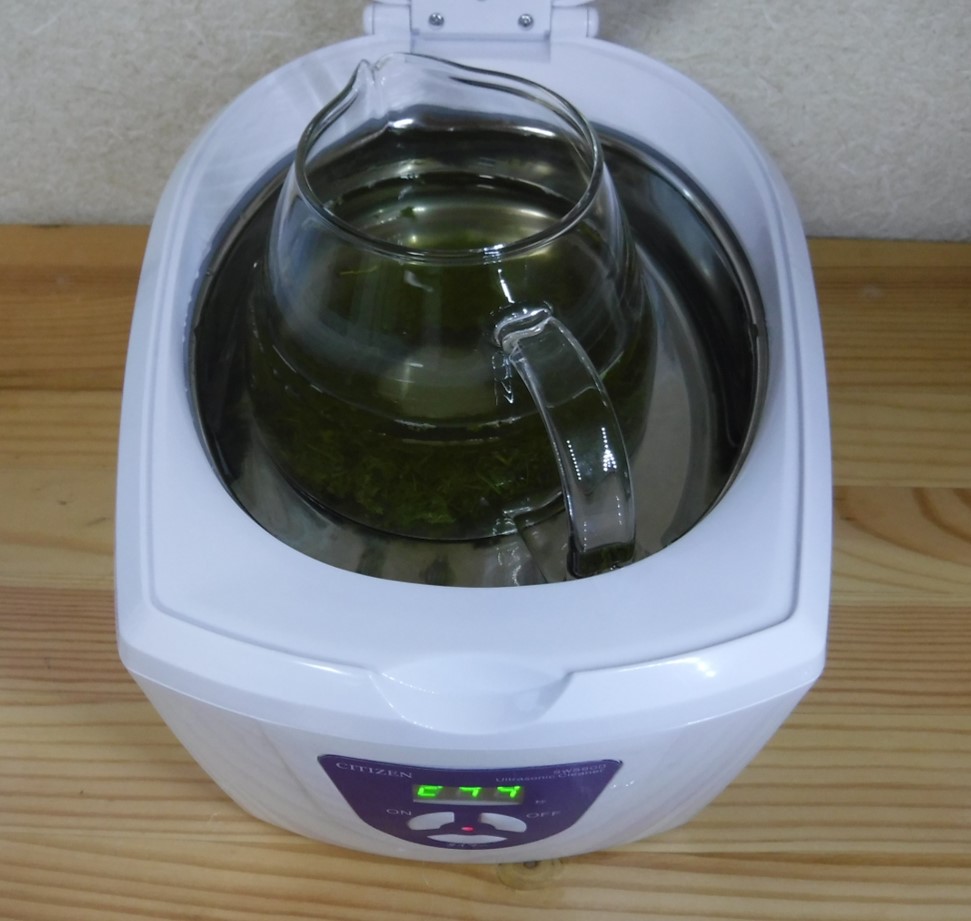
Then let’s try!!
[ Case1 : Deep steamed green tea]
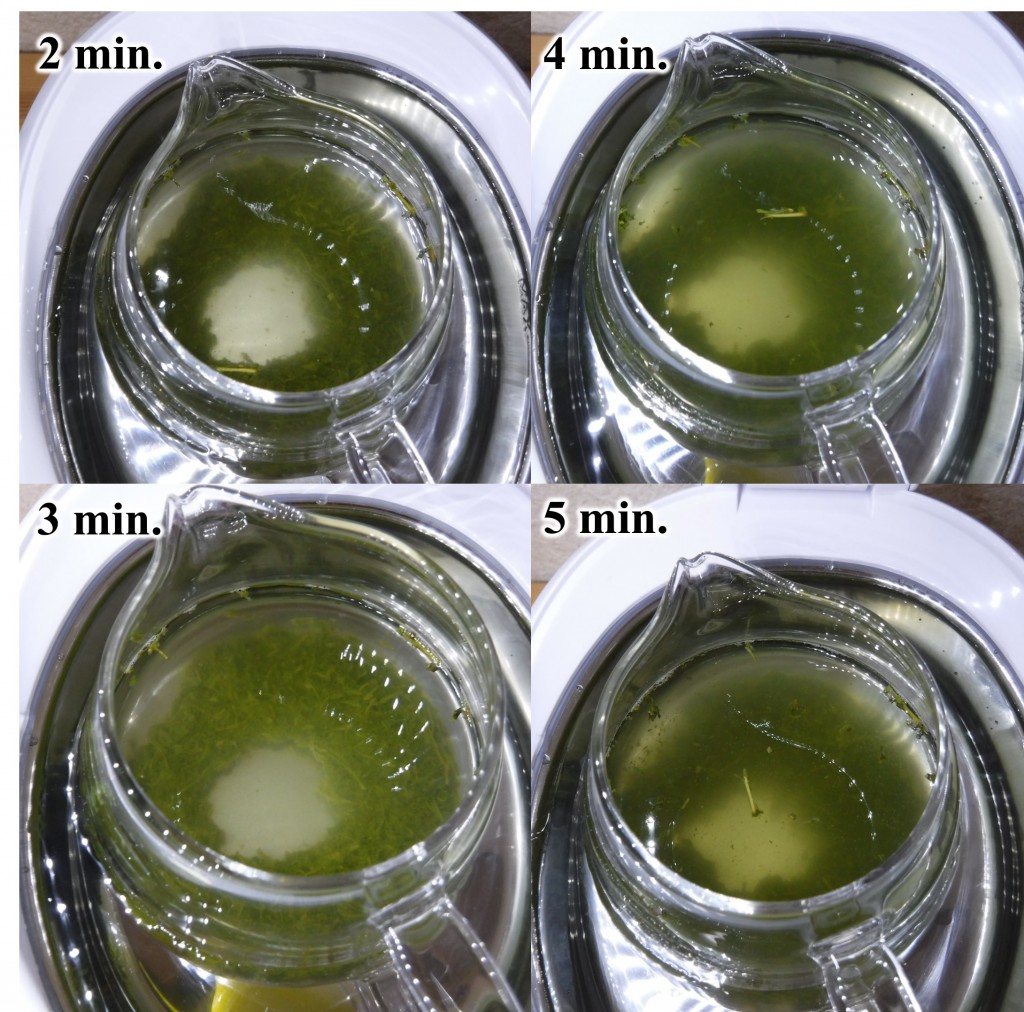
It was observed that the ultrasonication increased suspended compounds.
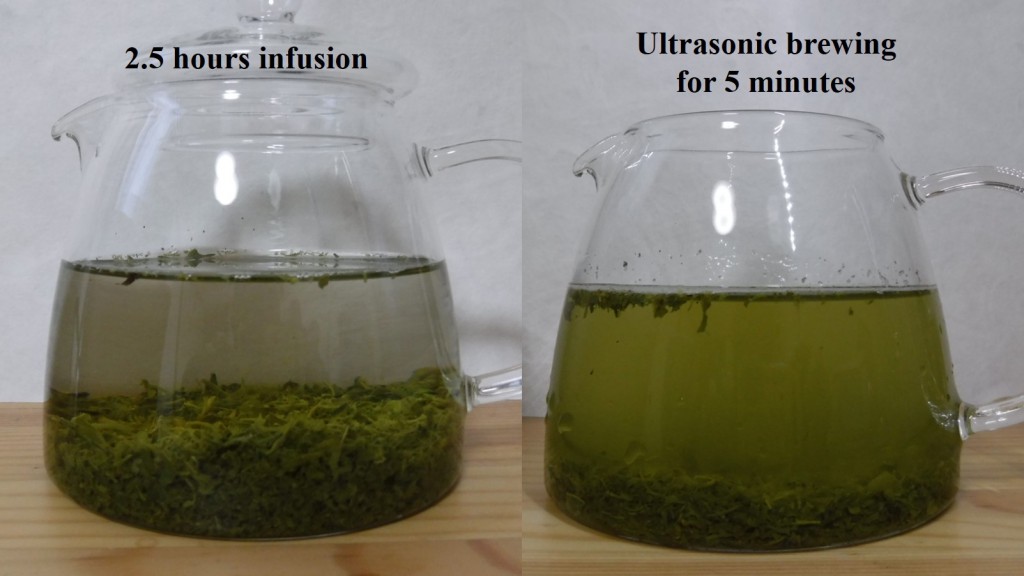
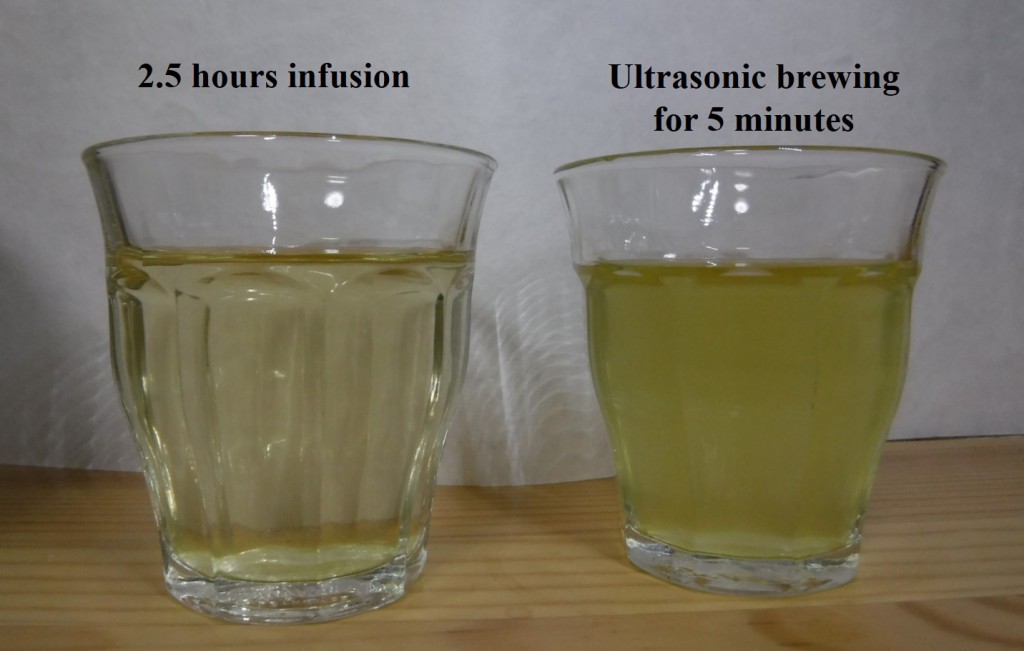
In the case of deep steamed tea, the liquor color of ultrasonic infusion was deeper than the infusion extracted at room temperature for 2.5 hours.
[ Case2 : Light steamed green tea]
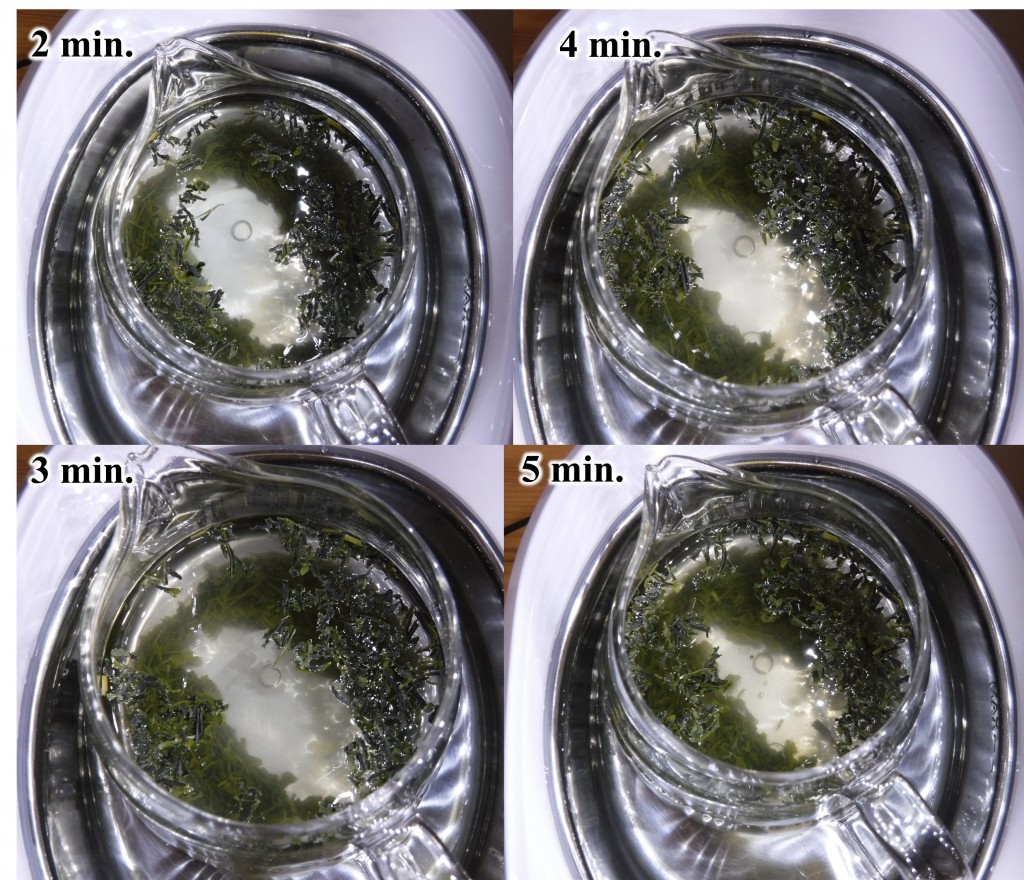
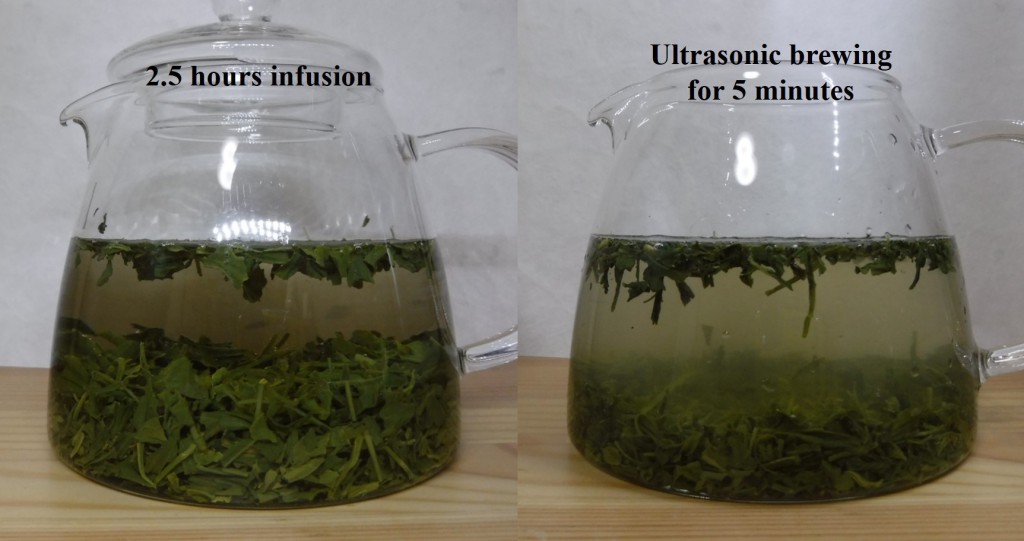
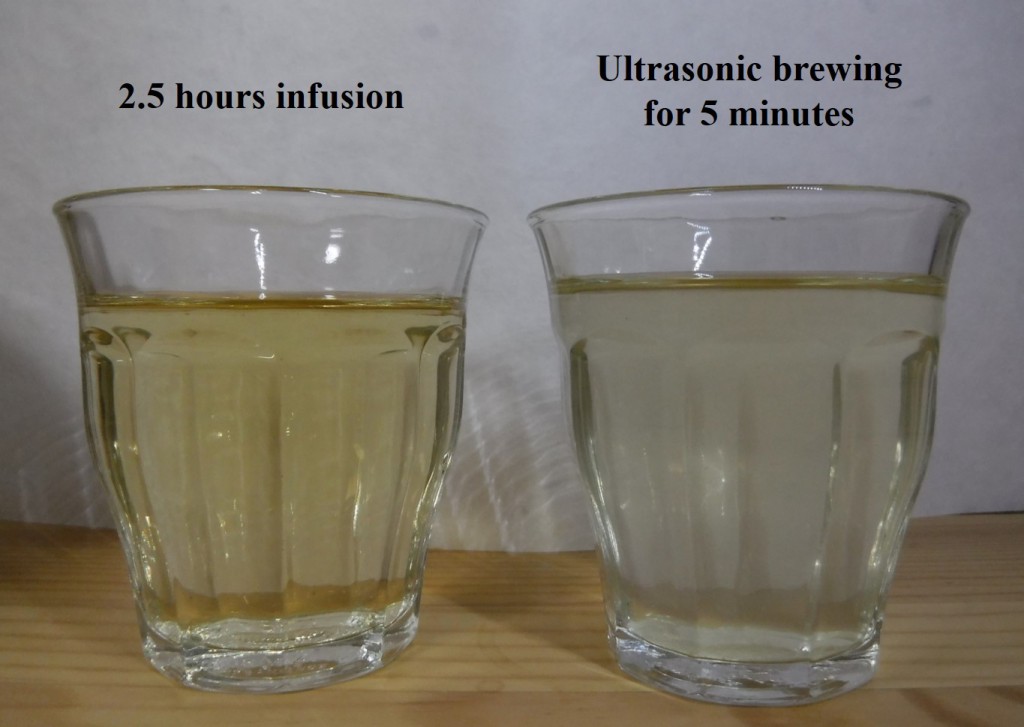
As contrasted with deep steamed tea, the liquor color of normal infusion looks more concentrated than the ultrasonic infusion in the case of light steamed tea
On the other hand, the intensity of light scattering for ultrasonic brewing is higher than the diffusive brewing as shown in the below, indicating ultrasonication could derive more suspended fraction from tea leaves.
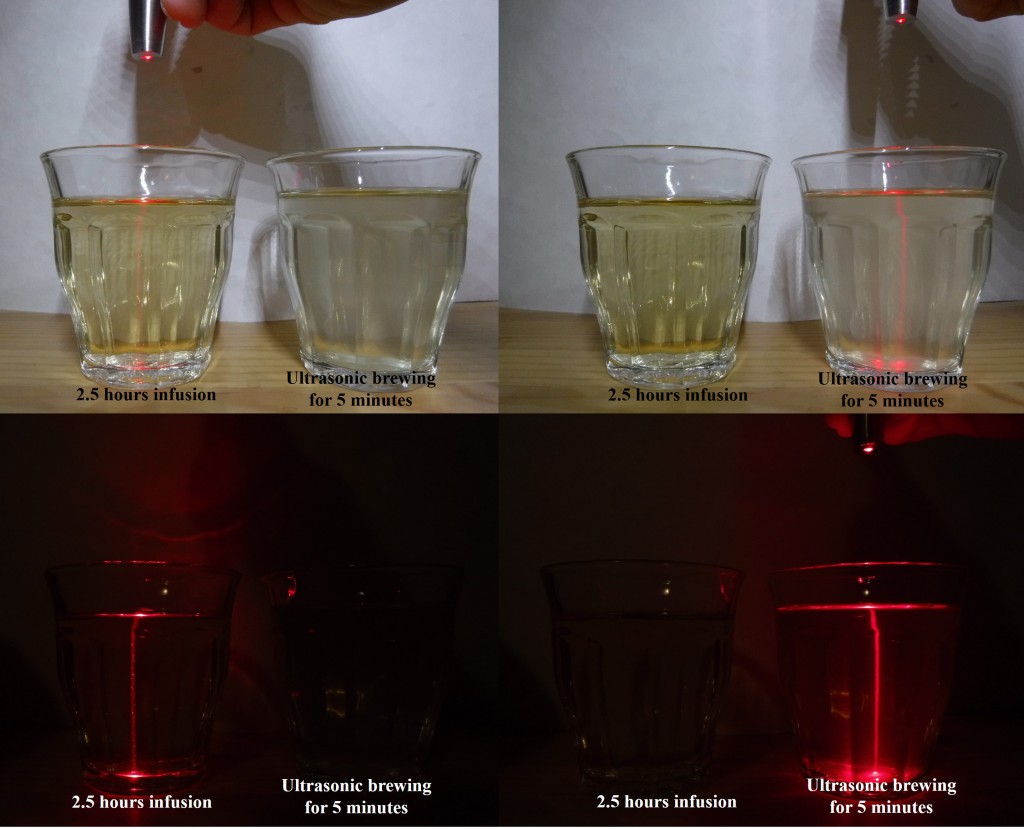
Unfortunately the suspended materials derived from ultrasonic wave could not be evaluated in this simple experiment. Based on the previous reports and in my speculation, the suspended fraction may consist of submicron-sized polyelectrolytes and complexes of polyelectrolyte and other compounds.
*Note
In order to observe the effect of ultrasonication only, the other conditions are adjusted to be same.
Ultrasonication : Ultrasonic wave was irradiated for 5 minutes with the Ultrasonic cleaner “SW5800” (CITIZEN), where the frequency is 42 kHz.
Conventional infusion : Loose leaf tea is soaked in 250ml of water (the water purified by the reverse osmosis, commercially available) for 2.5 hours at room temperature (15 degree Celsius) and its infusion is slightly filtrated by stainless mesh and commercially available filter.
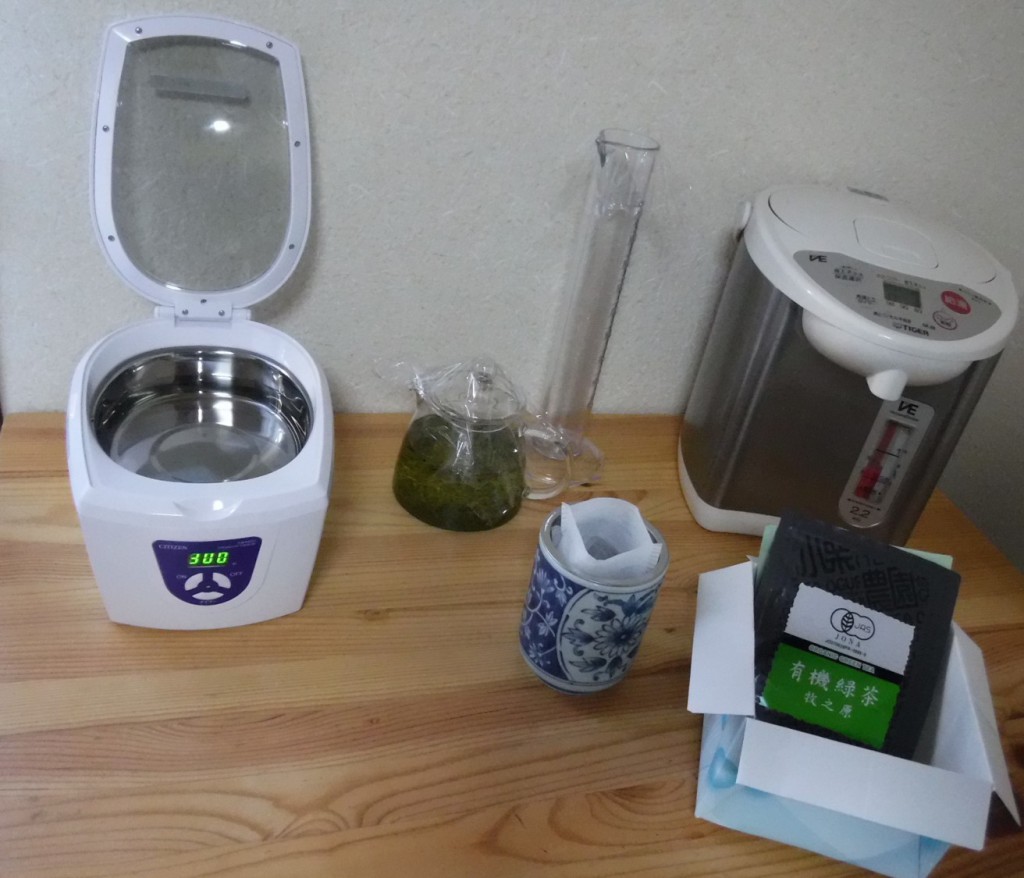
Apparatus for ultrasonic brewing.
References
[216] Lee L.S., Lee N., Kim Y.H., Lee C.H., Hong S.P., Jeon Y.W. and Kim Y.E. (2013) : Molecules 18:13530-13545.
[217] Xia T., Shi S. and Wan X. (2006) : Journal of Food Engineering 74:557–560
[219] Lante A. and Friso D. (2013) : Food Research International 54:269–276
[220] Mason T.J. and Zhao Y. (1994) : Ultrasonics 32:375-377
